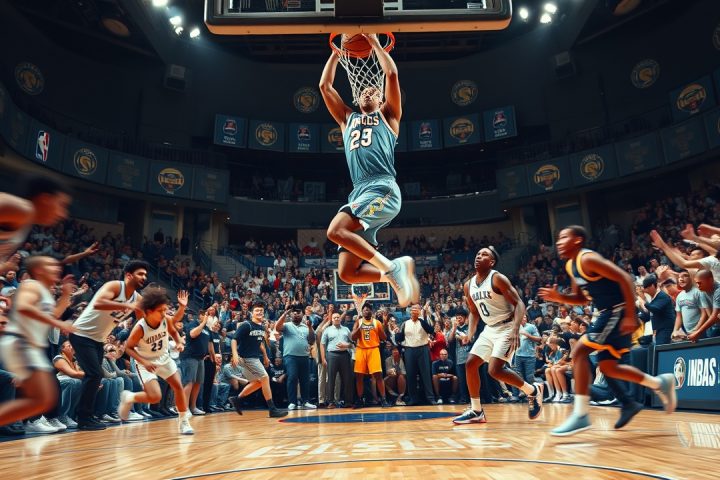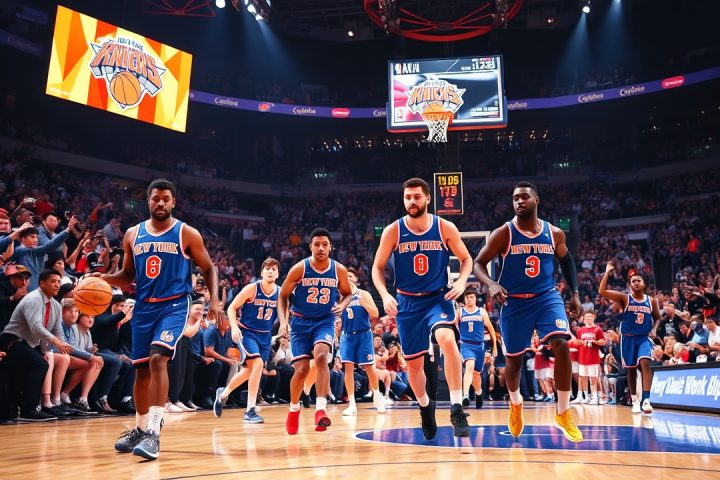Anticipation for the NBA Draft
The anticipation surrounding the NBA Draft is palpable, as it is scheduled to commence on Wednesday evening at Brooklyn’s Barclays Center. One of the most certain predictions leading up to the event is that Duke University standout Cooper Flagg will be selected first overall by the Dallas Mavericks. This 18-year-old power forward is poised to make history by becoming the youngest player to be selected first since LeBron James in 2003.
Financial Implications of the Draft
The financial implications of Flagg’s selection are significant as well. His four-year contract with the Mavericks is set to be worth $62.7 million, with the first year alone valued at $13.8 million. This cap hit arises from the NBA’s structure for rookie contracts, which are linked to the league’s salary cap.
The salary cap is projected to rise by 10% compared to last season, reaching an estimated $154.6 million for the 2025-26 season. Similar increases have been observed in rookie contracts, continuing a trend seen in past drafts.
Last year, the top pick was French player Zaccharie Risacher, who secured a four-year deal worth $57 million, illustrating the lucrative nature of being drafted first. The salary cap is influenced by basketball-related income (BRI), and with a new 11-year, $77 billion media rights deal taking effect soon with major networks, the financial outlook for the league looks promising. Initial projections indicate that teams could see their annual payouts rise by 33% within the first year of this agreement.
Salary Cap Stability and Future Projections
Importantly, as the NBA attempts to stabilize wage fluctuations, the maximum increase for the salary cap is capped at 10% annually. This change was implemented in the collective bargaining agreement (CBA) signed in 2023, which aims to prevent drastic salary cap spikes reminiscent of those that enabled the Golden State Warriors to acquire Kevin Durant in 2016.
Looking ahead, it is anticipated that the salary cap and, correspondingly, rookie contracts will continue to rise predictably, potentially leaving the number one pick in the 2029 Draft with a contract nearing $92 million over four years.
Contract Values for Later Picks
In contrast, draft picks selected later in the first round will see a marked decrease in contract value. The Oklahoma City Thunder, selecting at 15th, is expected to allocate $22.5 million across four years for their choice. Meanwhile, the Los Angeles Clippers, picking last in the first round, have a projected contract valuation of $14.1 million.
Typically, contracts for first-round selections feature full guarantees for the initial two years, providing protection against injury and performance issues, with options extending into years three and four.
Collective Earnings and Contract Differences
Overall, if all first-round picks see their options exercised, they could collectively earn $787 million in salaries over the next four seasons. While first-round contracts must comply with the rookie scale—requiring teams to offer between 80%-120% of the designated rookie salary slot—second-round picks enjoy more flexibility, often signing at lower rates or taking on two-way contracts that vary based on their playing time in both the NBA and the developmental G League.
In a notable instance, Bronny James, selected 55th overall by the Los Angeles Lakers last year, inked a four-year deal valued at $7.9 million with three years guaranteed, distinguishing his agreement from typical second-round contracts.
Comparison with Other Leagues
The NBA’s approach to rookie contracts mirrors that of other major leagues, such as the NFL, where top draft choices enter into four-year deals based on their draft position. For comparison, Cam Ward, the No. 1 pick in the NFL Draft, is set to receive $48.4 million, inclusive of a substantial signing bonus. With bonuses experiencing a significant increase this year, the contractual disparity between the NFL and NBA, which had reached 45%, has decreased to 28% following these changes.
Conclusion
In summary, the intricate dynamics of the NBA Draft and subsequent rookie contracts reveal a landscape of significant financial incentives tied to player performance and league earnings, setting the stage for young athletes entering professional basketball.




